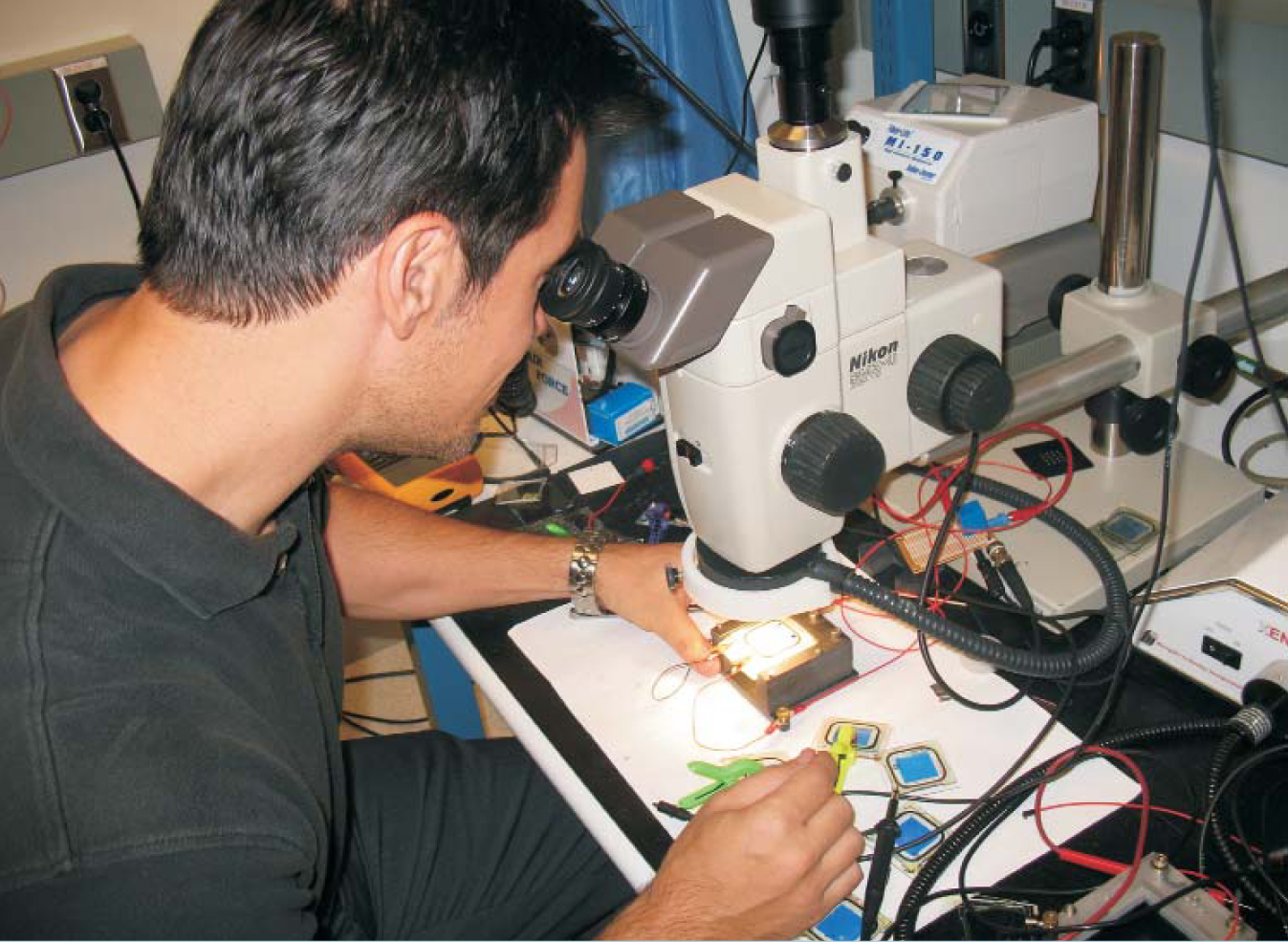Recalibrating research at Motorola
DOI: 10.1063/1.4725753
For much of its 80 years in business, Motorola Inc has developed products from physical science research in areas such as semiconductors, RF technologies, optoelectronics, and nanotechnology. The gallium arsenide microwave transistors used in the first commercial portable cell phones sprung from applied research at Motorola; so did the radio transponder that relayed NASA astronaut Neil Armstrong’s historic message from the Moon back to Earth. In all, the company boasts almost 23 000 patents.
In recent years, however, slumping sales and marketing battles with rival cell phone makers have strained the company’s resources and forced budget cuts, including at its research labs. Perhaps the first sign of trouble came in 2000, when the company dissolved its organic LED research program and licensed the related patents. Then in 2003 its semiconductor program spun off and became Freescale Semiconductor Inc. In June of this year, three months after Motorola announced a future split of its mobile-phone business from its broadband business, several research projects were halted, some 150 jobs were slashed, and 180 positions were moved into product-development business units; those actions reduced the research staff from 630 to 300. A company spokesperson declined to provide further details about the cuts.
Reinvent and refocus
Former Motorola employees speculate that the reduction and redistribution of R&D staff—a trend also seen at Alcatel-Lucent’s Bell Labs (see the story on
But Herbert Goronkin, former vice president of Motorola’s physical research labs, notes that compared with Bell Labs, Motorola has always had a stronger focus on “proof-of-concept applied research rather than curiositydriven basic research.” Still, in this decade Motorola executives have been moving too far away from science and technology in an effort to stress sales and marketing, says Goronkin, who was at the company from 1977 to 2003. He says the semiconductor program was likely spun off because the company lost patience with the 8–10-year projections for research to yield marketable fruit.
The physical research laboratories at Motorola were closely connected to the semiconductor program, and after the spin-off “it took us about a year to reinvent ourselves and refocus,” says Vida Ilderem, current vice president of the physical research labs, now known as the physical and digital realization research labs. With the recent restructuring, “we’ve become more focused towards research that goes out as far as five years,” she adds. The physical research groups continue to collaborate with government labs and Motorolafunded university centers on longerterm research.
A dynamic balance
“Our basic charter is to enhance user interaction with devices and to [design and program] embedded systems that take data from the physical world and connect it to the digital world,” says Ilderem. For example, results from Motorola’s haptics research—which studies the sense of touch—went into a 2008 cell phone model that gives its users a vibrating, tactile response when images of keys are pressed. Nanotechnology research projects, which Ilderem says often fall at the far end of their five-year projection, were spearheaded at Motorola around 1992 by physicist James Jaskie and focus on applications for quantum dots and carbon nanotubes, including technologies for new nanosensors, displays, and RF devices. Some of the carbon nanotube research is now being applied to photovoltaic energy applications, says Jaskie. “Energy is important for us, especially for our portable products.”
While Ilderem says that many of Motorola’s physicists are research scientists involved in optics, solid-state, and surface-science exploration, Papu Maniar, who manages the company’s advanced materials and nanotechnology program, says those physicists “are most successful if they are able to stay at the interface between being research scientists and engineers.”
The research climate at Motorola has always been about “achieving a dynamic balance,” says Jaskie, who in his 27 years at the company saw the focus of the physical science research shift from product engineering to more fundamental research. Now, with research projects beyond five years out the door and the more developed projects moved into business units, Jaskie says the labs are “taking the path down the middle.”

The nano-emissive display glass sample shown here undergoing electronic tests by Motorola engineer Michael Johnson incorporates thermally grown carbon nanotubes as electrodes and is expected to compete with the cost and picture quality of LCD TVs.
MOTOROLA INC

